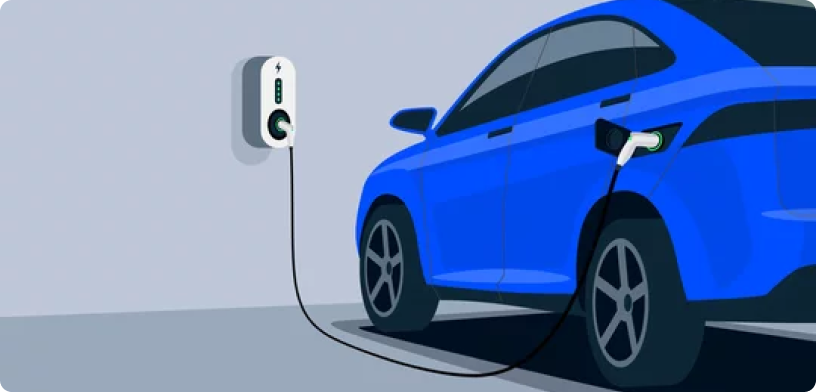
The world’s transition to electric vehicles has sparked excitement and hope for a sustainable tomorrow. However, as EVs become increasingly popular in the USA, a pressing challenge stands in the way of their widespread adoption—the need for a robust and user-friendly charging infrastructure.
In this blog, we embark on a journey to uncover the hurdles hindering the electric vehicle charging ecosystem in the USA. We’ll dive deep into the heart of the matter, exploring the scarcity of public charging stations, the high cost of infrastructure, the complexity arising from multiple charging standards, and more.
But fret not, because we’re also shining a light on the game-changing potential of design thinking principles in overcoming these challenges and empowering the electric vehicle revolution.
So, fasten your seatbelts as we hit the road to explore how UX design principles can revolutionize the EV charging landscape. Together, we’ll discover how innovative UX design services can ease range anxiety, attract investments, and create a seamless charging experience that sparks joy and fuels a sustainable future.
Lack of Public Charging Infrastructure and Range Anxiety
Our first pit stop takes us to the heart of the matter—the scarcity of public charging stations. As of 2023, the USA boasts around 100,000 public charging stations—a far cry from the numbers needed to quell range anxiety.
Picture yourself on a cross-country road trip, eagerly exploring the breathtaking landscapes, but feeling the twinge of range anxiety gnawing at the back of your mind. Will you find a charging station when you need one?
High Cost of Charging Infrastructure and Attracting Investment
As we rev our engines for the next leg of our journey, we encounter a formidable obstacle—the high cost of setting up charging infrastructure. The average cost of a public charging station hovers around $15,000—a hefty price tag that leaves businesses and governments questioning their investments. To turbocharge the growth of EV adoption, design thinking introduces innovative solutions to reduce setup costs and attract much-needed investments.
Smaller, modular charging units can allow small businesses to start with a few stations and scale up as demand grows. With the promise of a return on investment and increased foot traffic from EV drivers, businesses can find the confidence to embrace the EV charging revolution, bolstering the network of charging stations across the country.
Standardization: A Key to Seamless Charging Experience
Another challenge looms on the horizon—multiple charging standards creating confusion for consumers. The USA finds itself at a crossroads, juggling the CHAdeMO and CCS Combo standards. This lack of standardization can feel like navigating a maze, leaving drivers unsure if their vehicles will find compatible charging stations.
Battery Technology and Government Support
As we approach our final stretch, we confront the issue of battery technology and government support. While EVs present a greener alternative, their reliance on imported batteries raises concerns about supply chain stability and price volatility. This bumpy terrain could impact the growth of the EV market in the USA, throttling the transition to sustainability. Additionally, government incentives play a crucial role in accelerating EV adoption, but slow progress has left many EV enthusiasts tapping the brakes.
The UX Advantage
In the race towards a greener tomorrow, UX design services are the driving force that empowers the electric vehicle charging ecosystem.
By crafting charging stations with user needs at the forefront, design thinking empowers drivers with real-time station location and availability information. With intuitive interfaces and straightforward navigation, drivers can effortlessly locate and access charging stations, ensuring their journeys are filled with the thrill of adventure rather than the fear of running out of juice.
UX design thinking can also advocate for a unified charging experience, promoting standardized interfaces and compatibility across all EVs. By simplifying the charging process and creating a seamless user journey, UX design can lay the foundation for an interconnected EV ecosystem.
Lastly, with the support of design thinking principles, we can innovate battery technology, optimize performance, and build a more stable and reliable supply chain. By creating immersive experiences that highlight the benefits of EVs and the importance of sustainable practices, UX design can galvanize governments into action, paving the way for robust incentives that accelerate the EV revolution.
Let’s hit the accelerator and ignite the spark that will power the electric vehicle charging revolution. The road to a greener future awaits—it’s time to drive change! Contact YUJ Designs today, and let’s join forces to shape a cleaner, greener, and more electrifying tomorrow.






